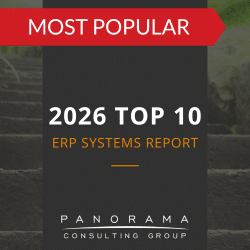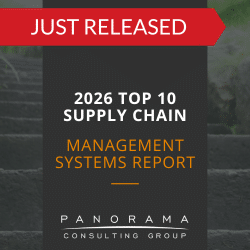ERP implementations are always difficult, and often times even more so for government organizations. An interesting recent Computer World article discusses how the Government Accountability Agency (GAO) recently uncovered the sad state of some of the US military’s ERP implementation projects. The agency issued a report that found “Many of the [ERP] projects are years behind schedule and significantly over budget, including one that is expected to rack up nearly 10 times its initial cost . . .”
Unfortunately, the U.S. Military isn’t alone. Recent articles in the IT press have outlined other failed ERP implementations, including at the City of New York and other high-profile government organizations. We regularly work with our government clients to provide independent validation and verification (IV&V) and expert witness services to their large, high-risk ERP implementations, and failures like these underscore the need for government organizations to ensure they have the right ERP implementation experience, methodologies and independent counsel to help manage a successful implementation.
Although there are general best practices that organizations should implement, regardless of whether they are in the public or commercial sectors, there are some pitfalls that Panorama’s experience with government and public-sector entities tells us are more common in those sectors. Here are three common reasons why we’ve seen federal, state and local government entities struggle with their ERP software initiatives:
1. Too much focus on minimizing short-term costs. Unfortunately, the purchasing and procurements processes in the public sector are, at times, overly driven by the desire to minimize short-term costs. Government entities and government contractors often put a very heavy weighting in their Request for Proposal (RFP) processes, much more so than the commercial sector. As a result, system integrators, ERP integrators and ERP consultants will typically lowball their proposals and cost estimates to these entities – often by compromising scope and/or quality – all in the name of providing the lowest-cost solution to their government clients. In the end, this approach inevitably results in corners being cut, lower-quality processes and minimal efforts to complete the implementation, which (ironically) increases total cost of ownership of these ERP systems in the long-term.
2. Contract structures that set up implementations for failure. Our government and public-sector clients are much more likely than their commercial counterparts to negotiate fixed-cost or not-to-exceed contract structures with their ERP vendors. Little do they realize, however, that these contract structures create perverse and unintended incentives to cut corners, minimize focus on high-value activities such as organizational change management and business process management, and rush the organization to implement before they’re ready. Fixed-cost contracts, while appealing on the surface, can be the root cause for the very ERP failures, cost overruns and lack of benefits realization that they are intended to mitigate. In addition, purchasing or procurement managers who don’t know much about successful ERP system implementations often miss the fine print in contracts and statements of work that put the onus on the government entities to handle some of the ERP critical success factors, thus increasing overall costs.
3. Inadequate attention to organizational change management. Because government entities typically change at a slower pace and have ERP systems that affect more employees than most commercial organizations, organizational change management is even more imperative. However, government entity executives often don’t have the ERP experience to understand the necessity of organizational change management and, just as importantly, what exactly organizational change management means. Providing comprehensive organizational change management goes beyond simple end-user training at the end of the implementation; it also includes organizational readiness, organizational impact assessments, business process-based training, and targeted employee communications, all of which can be perceived to increase short-term implementation costs.
While no ERP implementation is ever easy and risks can’t ever be completely avoided, avoiding the above pitfalls can be the first step to helping government ERP system initiatives to get back on track.
Learn more about how we help government entities manage their ERP implementations more effectively by reading our Government ERP Case Study and our Lessons Learned From a Government ERP Failure white paper. Feel free to contact us at 720-515-1377 if you have any specific questions about how Panorama can be of assistance in your government ERP initiative.












